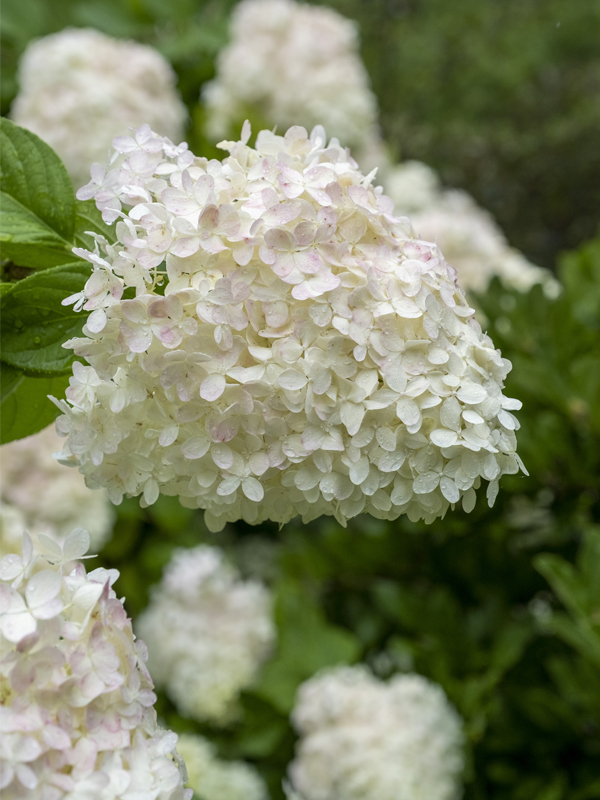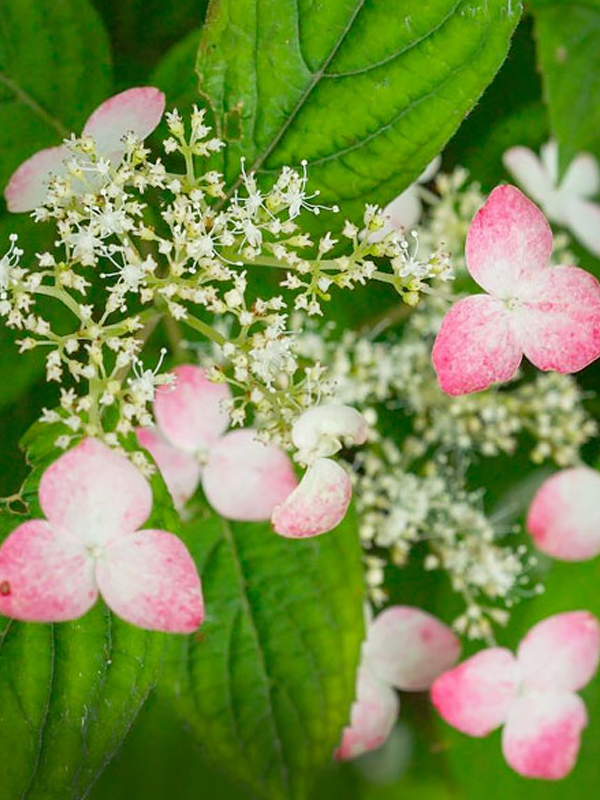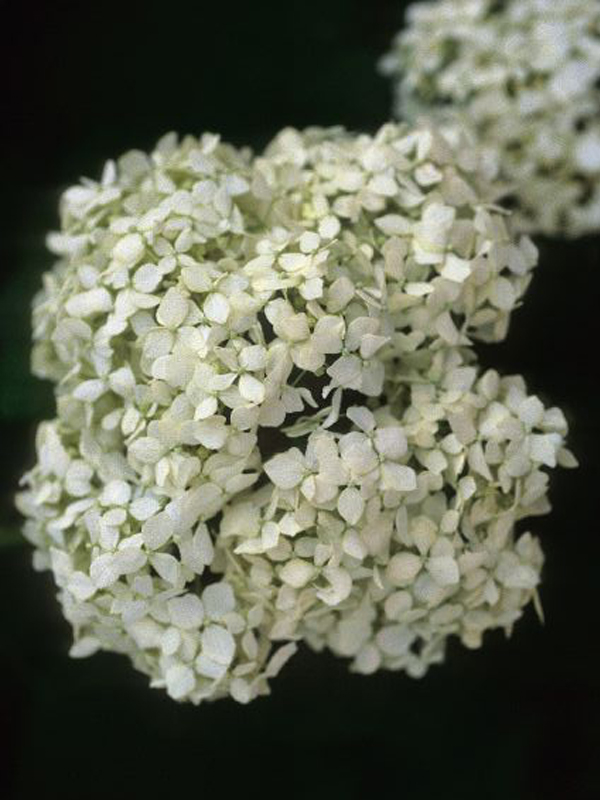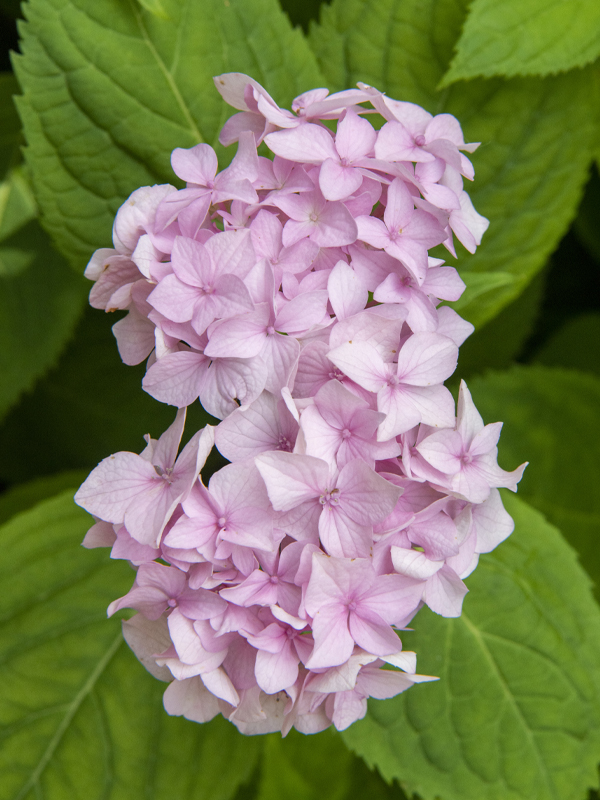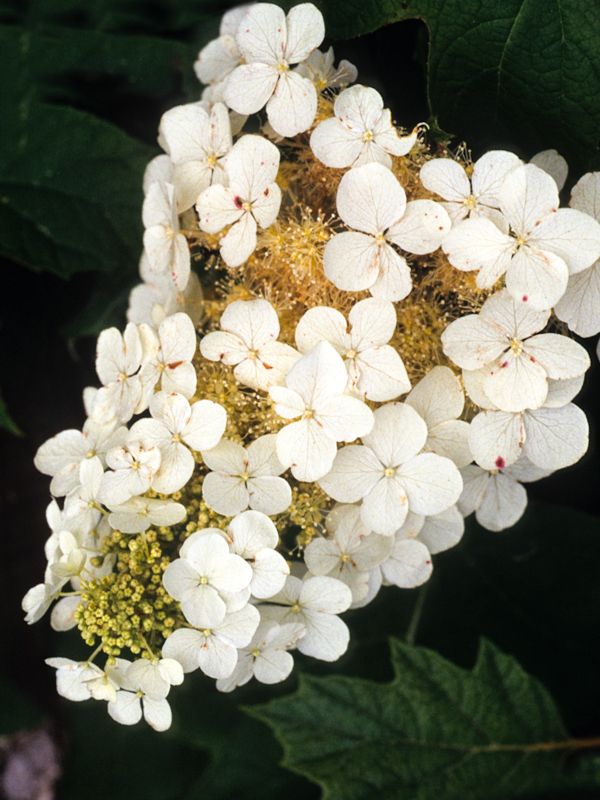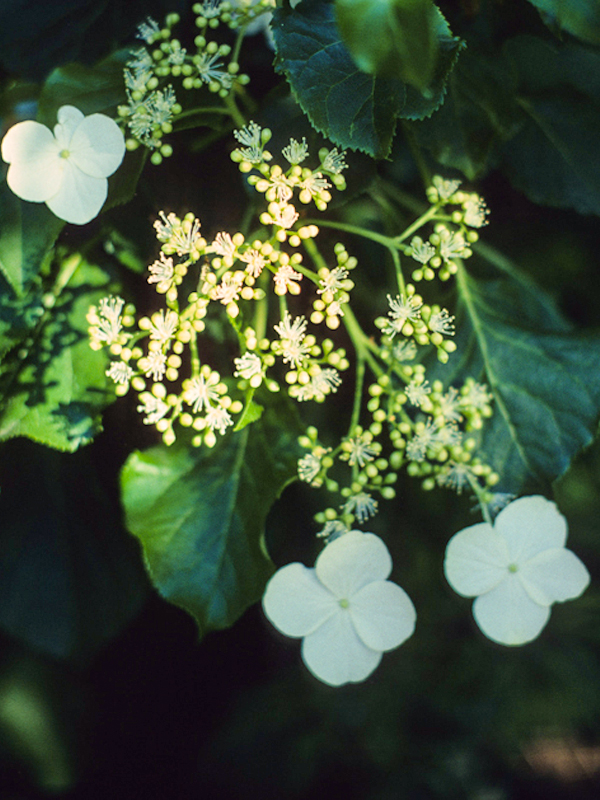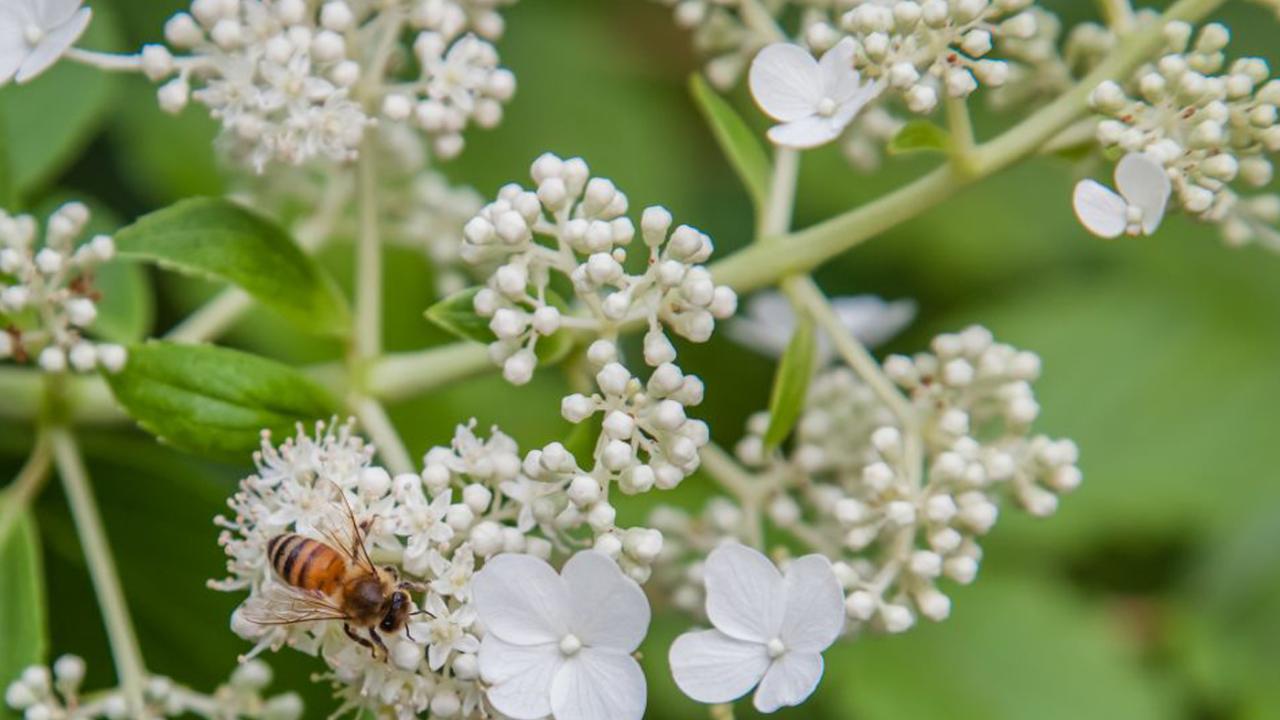

Hydrangeas 101

Hydrangeas are the ornamental darlings of the woody plant world. Long popular with gardeners, some hydrangeas were sold in the Midwest before the Civil War. Like many plants, they have come in and out of vogue. Today, hydrangeas are experiencing an extraordinary revival.
The genus Hydrangea includes flowering shrubs, small trees and climbers. Shrubs vary in size from dwarf specimens to enormous bushes. The two species native to North America are smooth hydrangea (H. arborescens) and oakleaf hydrangea (H. quercifolia). In the past decade, breeders have been busy creating dozens of new varieties with noteworthy attributes.
Hydrangeas tout big beefy blossoms that are generally cream-colored, but some flaunt shades of blue, lime green, violet, pink, strawberry or a mixture of tints. They are a welcome addition to shrub borders, foundation plantings, perennial beds, cottage gardens, and more.
Depending on their flower shape, hydrangeas are called lacecap, mophead or panicle. Their wonderful fresh flowers are lovely in arrangements and, left on the plant, the dried blossoms offer winter interest in the landscape.
Extreme winter cold can be a challenge for some hydrangeas. Panicle and smooth hydrangeas produce flowers on the current season’s growth. For example, in March and beyond, the plants form flower buds on new woody stems—they should always produce flowers despite winter freezes. Other hydrangeas form flower buds on last year’s growth. As the temperatures dip in winter, their buds may freeze, which results in no flowers the following spring.
See the Garden’s evaluation of panicle hydrangeas.
Nina Koziol is a garden writer and horticulturist who lives and gardens in Palos Park, Illinois.


